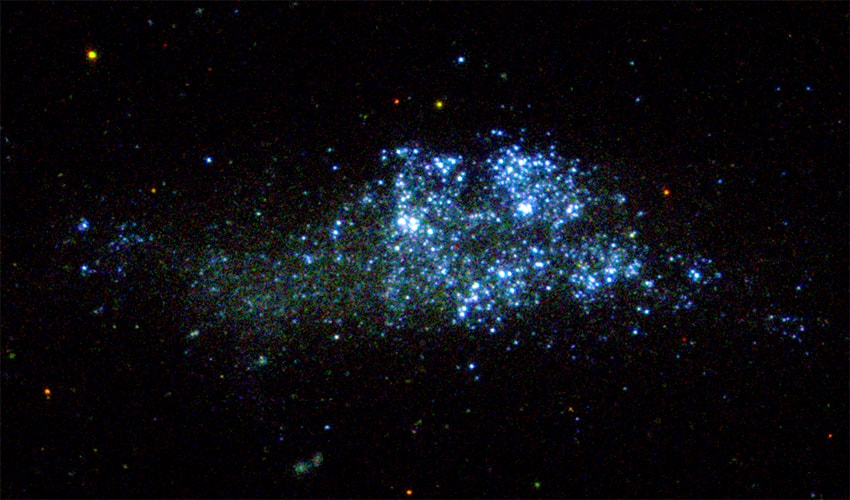In the last week of September, three ISRO satellites celebrated their birthdays. On 24 September, India’s first interplanetary spacecraft, the
Mars Orbiter Mission
celebrated three years in orbit, well beyond the
planned mission duration of six months
. On 26 September, the weather forecasting satellite
ScatSat-1
completed a year in orbit. On 28 September, AstroSat, the first dedicated astronomy mission by India celebrated two years in orbit. [caption id=“attachment_2600444” align=“alignleft” width=“380”]
 Mangalyaan. Image Credit: ISRO[/caption] ISRO had organised a MOM science meet where the personnel in charge of the scientific payloads on the Mangalyaan mission gave presentations on the findings of the mission. The orbiter conducted studies of the upper Martian atmosphere and found more
superhot argon in the region
than expected a finding that can help researchers understand the escape rate of the atmosphere. The Mars Colour Camera has captured more than 715 images of Mars, some of which were used to compile an
Atlas of Mars
. ISRO has detailed how the ScatSat-1 was used to measure the levels of
flooding across India
during the 2017 monsoon season. ISRO has indicated that the ScatSat-1 mission is not just an Indian mission, but a global one. Data gathered by ScatSat-1 is being
shared with NASA and ESA
, which in turn will be passed on to all those involved in weather studies and climate change studies. The ScatSat-1 was the primary payload on the PSLV-C35 mission which deployed
8 satellites into orbit
in September 2016. The AstroSat mission was launched in September 2015 on board the
PSLV-C30 mission
, sharing the ride with six co-passengers. This was the first astronomican instrument in space available for Indian researchers to make observations. The satellite is being used to study celestial objects, and the AstroSat was one of the three satellites, along with the Hubble Space Telescope and the Chandra X Ray Observatory to detect a
massive coronal explosion
on the nearest planet hosting star, Proxima Centauri. [caption id=“attachment_4110157” align=“aligncenter” width=“850”]
Mangalyaan. Image Credit: ISRO[/caption] ISRO had organised a MOM science meet where the personnel in charge of the scientific payloads on the Mangalyaan mission gave presentations on the findings of the mission. The orbiter conducted studies of the upper Martian atmosphere and found more
superhot argon in the region
than expected a finding that can help researchers understand the escape rate of the atmosphere. The Mars Colour Camera has captured more than 715 images of Mars, some of which were used to compile an
Atlas of Mars
. ISRO has detailed how the ScatSat-1 was used to measure the levels of
flooding across India
during the 2017 monsoon season. ISRO has indicated that the ScatSat-1 mission is not just an Indian mission, but a global one. Data gathered by ScatSat-1 is being
shared with NASA and ESA
, which in turn will be passed on to all those involved in weather studies and climate change studies. The ScatSat-1 was the primary payload on the PSLV-C35 mission which deployed
8 satellites into orbit
in September 2016. The AstroSat mission was launched in September 2015 on board the
PSLV-C30 mission
, sharing the ride with six co-passengers. This was the first astronomican instrument in space available for Indian researchers to make observations. The satellite is being used to study celestial objects, and the AstroSat was one of the three satellites, along with the Hubble Space Telescope and the Chandra X Ray Observatory to detect a
massive coronal explosion
on the nearest planet hosting star, Proxima Centauri. [caption id=“attachment_4110157” align=“aligncenter” width=“850”]
 An image of the Wolf–Lundmark–Melotte irregular galaxy captured by AstroSat. Image: ISRO.[/caption] All the three satellites, the MOM, ScatSat-1 and AstroSat continue to remain in operation and are in good health.
An image of the Wolf–Lundmark–Melotte irregular galaxy captured by AstroSat. Image: ISRO.[/caption] All the three satellites, the MOM, ScatSat-1 and AstroSat continue to remain in operation and are in good health.
Three ISRO satellites celebrated their birth anniversaries in the last week of September
tech2 News Staff
• October 4, 2017, 19:47:31 IST
The Mars Orbiter Mission, The ScatSat-1 weather satellite and the AstroSat astronomical instrument all celebrated their birthdays.
Advertisement
)
End of Article